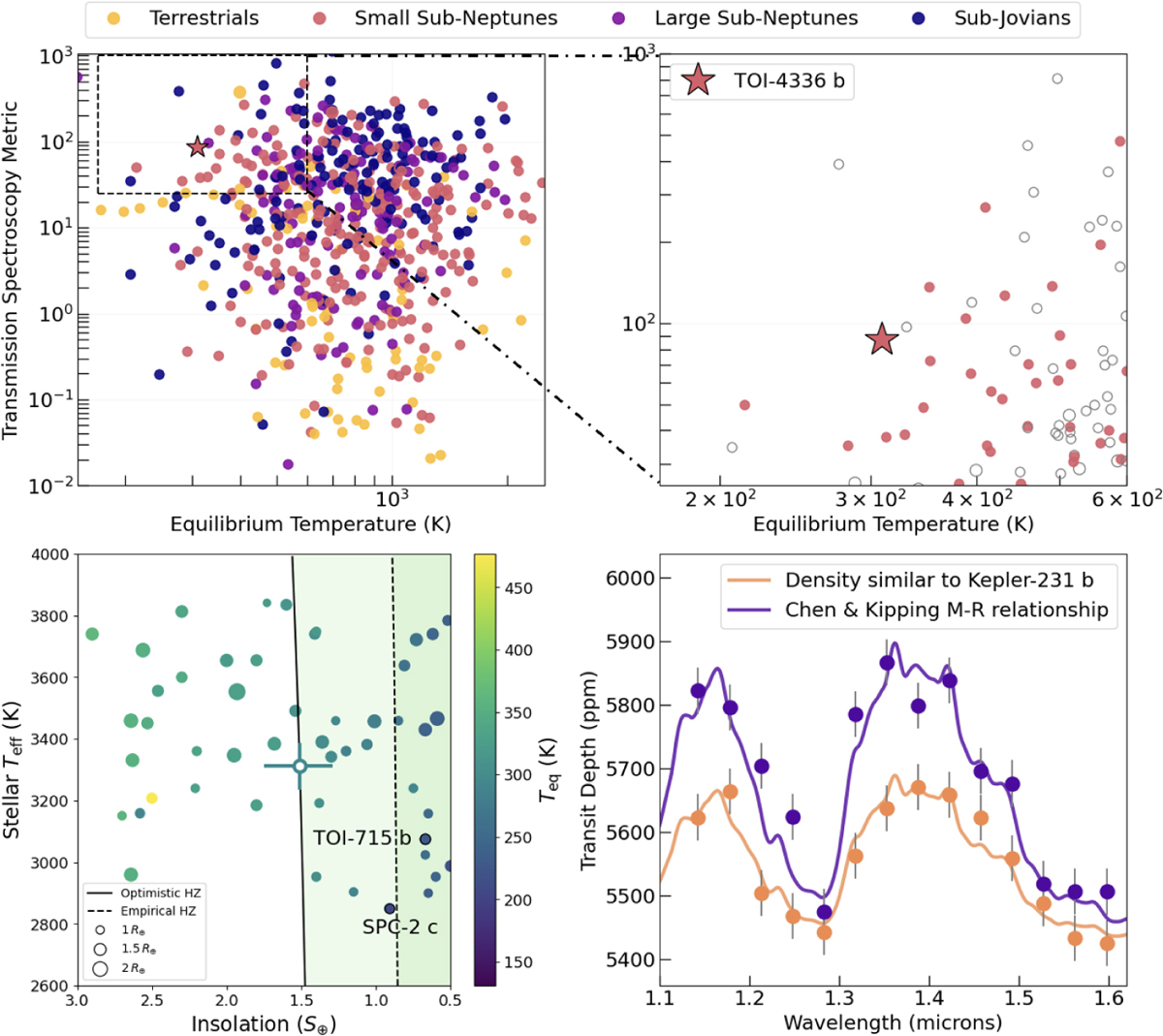Fig. 11

Download original image
Top left panel: complete sample of all known exoplanets with measured masses (Data from NASA Exoplanet Archive, Apr 2024, https://exoplanetarchive.ipac.caltech.edu/). Following Kempton et al. (2018), terrestrial planets correspond to planetary radii below 1.25 R⊕, small sub-Neptunes radii between 1.25 and 2.75 R⊕, large sub-Neptunes radii between 2.75 and 4 R⊕, and sub-Jovians are planets with radii between 4 and 10 R⊕. TOI-4336 A b is shown by the star symbol. Top right panel: zoomed in view that puts TOI-4336 A b in the context of small sub-Neptunes only. Bottom left panel: stellar effective temperature as a function of insolation of transiting exoplanets orbiting hosts cooler than 4000 K. The solid black line denotes the empirical HZ boundary and the dashed line the conservative one (Kopparapu et al. 2013). The size of points scales with the planetary radius. The points are colored according to their equilibrium temperature. TOI-4336 A b is highlighted with errorbars, and it is well placed at the inner edge of the HZ of its host star. Bottom right panel: synthetic transmission spectra for TOI-4336 A b, assuming a typical H/He-rich atmosphere with isothermal temperature profile at the planet’s equilibrium temperature (~300 K). The simulated data points are for the Wide Field Camera 3 instrument of HST.
Current usage metrics show cumulative count of Article Views (full-text article views including HTML views, PDF and ePub downloads, according to the available data) and Abstracts Views on Vision4Press platform.
Data correspond to usage on the plateform after 2015. The current usage metrics is available 48-96 hours after online publication and is updated daily on week days.
Initial download of the metrics may take a while.


